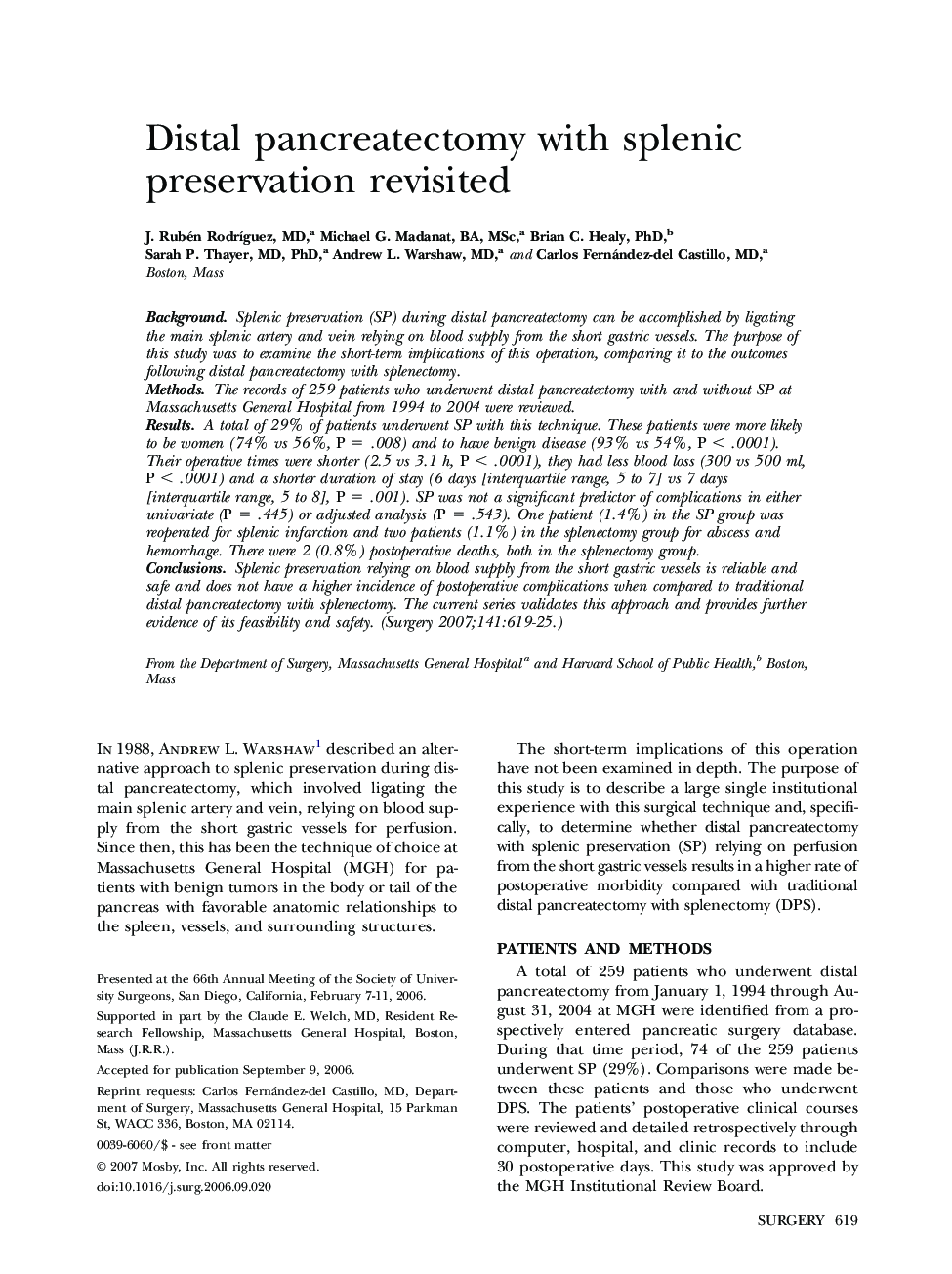| Article ID | Journal | Published Year | Pages | File Type |
|---|---|---|---|---|
| 4309706 | Surgery | 2007 | 7 Pages |
BackgroundSplenic preservation (SP) during distal pancreatectomy can be accomplished by ligating the main splenic artery and vein relying on blood supply from the short gastric vessels. The purpose of this study was to examine the short-term implications of this operation, comparing it to the outcomes following distal pancreatectomy with splenectomy.MethodsThe records of 259 patients who underwent distal pancreatectomy with and without SP at Massachusetts General Hospital from 1994 to 2004 were reviewed.ResultsA total of 29% of patients underwent SP with this technique. These patients were more likely to be women (74% vs 56%, P = .008) and to have benign disease (93% vs 54%, P < .0001). Their operative times were shorter (2.5 vs 3.1 h, P < .0001), they had less blood loss (300 vs 500 ml, P < .0001) and a shorter duration of stay (6 days [interquartile range, 5 to 7] vs 7 days [interquartile range, 5 to 8], P = .001). SP was not a significant predictor of complications in either univariate (P = .445) or adjusted analysis (P = .543). One patient (1.4%) in the SP group was reoperated for splenic infarction and two patients (1.1%) in the splenectomy group for abscess and hemorrhage. There were 2 (0.8%) postoperative deaths, both in the splenectomy group.ConclusionsSplenic preservation relying on blood supply from the short gastric vessels is reliable and safe and does not have a higher incidence of postoperative complications when compared to traditional distal pancreatectomy with splenectomy. The current series validates this approach and provides further evidence of its feasibility and safety.
